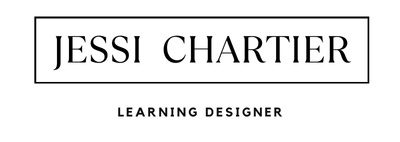Implementing Carl Rogers in the Classroom
After pulling together some resources for our instructors here at work, I came across a great article that outlines Carl Roger’s theories on psychology, which align themselves with educational theories. Rogers is often associated with taking Maslow’s hierarchy of needs to the next level, and often leaves a bit to be wanted when it comes to implementation in a learning environment. How can one construct a learning environment that simultaneously elicits strong self-worth while also building ideal self? Here’s how. According to Rogers, a fully-functioning person is one who is open to new experience, lives in the moment without judgement, trusts their feelings, involves creativity, and lives a fulfilled life. All these things are vital to a successful learning environment, so it’s fitting that we architect an environment to strengthen and elicit these notions.
Open to Experience
As this involves the acceptance of life circumstances and emotions that come with it, a learning environment can do the following.
- Encourage failure, so as to see failure as a positive opportunity to learn – debunking the myth that to fail is the same as to be defeated.
- Incorporate choice in assignments, lessons, and learning. Feed the inner explorer to help foster curiosity.
- Build a safe environment, where students aren’t punished for unique thinking. This encourages risk taking.
Existential Living
This means to live without preconceived notions of what will happen. It encourages living in the moment, and a learning environment can do that through the following.
- Journal writing – allows students to think about where they are, being mindful of their learning and how they got there.
- Encouraging emotion recognition during the learning process. Ask students – how do you feel right now? Being emotionally aware will help students live in the moment; it gets the noise out of the way so they can just be.
- Conduct talk-alouds to demonstrate mindfulness in action. No one is natural aware of themselves in a situation – it’s a skill that needs to be taught. Talk-alouds help learners see how the “experts” do it. Even if we don’t always get it right – it’s part of being human.
Trust Feelings
Western cultures are horrible at emotional intelligence. We don’t include a lesson about how to be angry, sad, or joyful. We don’t teach it. But we should. Here’s how a classroom can encourage that.
- Provide space for students to react and be emotional. Let them get angry and walk away for a bit.
- Journal writing – just as it allows students to be mindful of their learning, it gives space and validation to their “guts” and feelings. In a world that values data and facts, having a space to validate the passion that makes us human goes a long way.
- Model. Just like talk-alouds above help, articulate what you’re doing when you trust your feelings and why. Again, it goes back to modeling that behavior and showing students how the “experts” do it.
Creativity
This should be the most familiar. Fostering creativity in a classroom is something many strive for, so I won’t pretend to have the best ideas. Here are others who have much better ideas than me:
- Edutopia: Fuel Creativity in the Classroom
- Innovation Excellence: 30 Ways to Promote Creativity in your Classroom
- Iowa State University: Techniques for Creative Teaching
- Scholastic: The Creative Classroom
Fulfilled Life
To me, this is a combination of all the above. A fulfilled life is when a learner is interested in taking risks, feels confident and comfortable, and wants to explore more about the world and themselves. It also means feeling important to the group. Many of the same techniques can apply here, but this can also include peer teaching, peer advocacy, and committee membership. Any time you can provide student voice to the classroom, the stronger the classroom.
Happy teaching!
